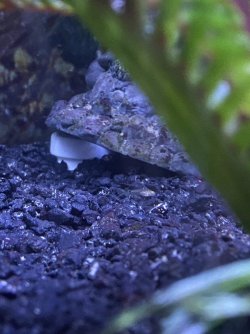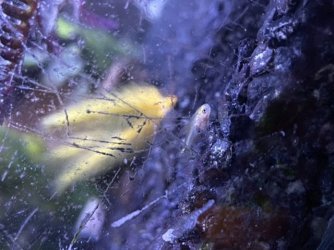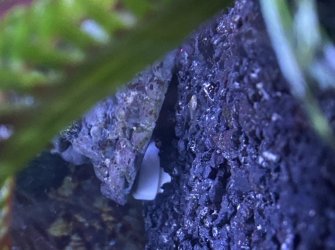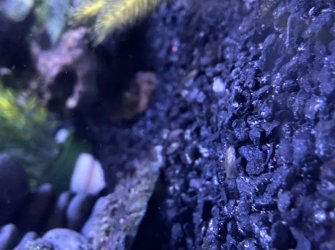Alexis_loredo
New Member
- Joined
- Oct 29, 2019
- Messages
- 15
- Reaction score
- 1
I have a 75 gal tank and at one point had 2 angel fish, two Dalmatian mollies, one golden panda molly, one silver molly, 4 black tetras, 4 red wags, and two red tail tinfoil barbs. I took all the fish out of the tank and put them in quarantine about two months ago because they had ich. The tinfoil barbs stayed in the tank a bit longer since they started to nip at the other fish and finally got their own tank about 3 weeks ago. And today noticed a few baby fish on the main tank and am not sure which fish had any babies since they’re completely see through and none of the fish are see through. I managed to get a few pictures of the baby fish. I think they might be the red tailed tinfoil barbs but I’m not too sure.






